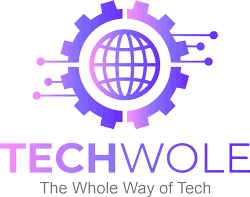Amongst the rapidly changing scenery of the renewable energy, solar power represents as a strong signal of sustainability and innovativeness. As technology gets upgraded, and renewable energies continue to become the world’s great choice, solar companies are on the lookout for innovations to keep operations lean and optimal. Another angle of improvement is revealed in the utilization of solar software that are software resources that have been designed with the intention of improving productivity and optimization within the solar industry. Ranging from solar project management to system design, solar software presents users with a rich and diverse set of functionalities suited to the needs of solar professionals. At last the topic is about the ways in which the solar software can upgrade your team performance, working as a driver of the process in the challenging renewable energy area.
Streamlined Project Management:
Solar projects are usually complex in terms of coordination of a number of tasks, such as site investigation, system design, solar permitting, installation and routine maintenance. With solar software, teams are enabled to effectively have a central platform that makes it possible to manage and track various project life-cycle aspects. Characteristics such as task assignment, progress tracking, and communication tools allow it to make collaboration well organized and smoother and make sure everyone is up-to-date. Automation is done to prevent manual operations and reducing administrative overload, which frees more resources for delivering quality solar solutions within a given time frame.
Accurate System Design:
Devising solar energy systems is a highly precise task that involves intricate calculations and detailed planning to maximize efficiency and meet customer requirements. The software-based tools that solar engineers use involves the top-notch design kits which enable them to construct 3D models of solar installations considering the panel orientation, shading analysis, and energy output estimates. The software tools engineers use are intuitive and enable the team to reduce the design cycle by enhancing the speed of design, eliminating design flaws and bringing solutions in response to market demands of energy production and consumption.
Automated Proposal Generation:
Crafting proposals for solar projects can be a time-consuming task that involves gathering data, performing financial analysis, and creating detailed reports for clients. Solar software automates this process by generating proposal via templates tailored to individual needs or financial modeling tools integrated in the software. Teams can customize project descriptions as well as financial information in matter of seconds and produce professional-looking proposals with project scope, cost estimates, financing options, and client savings on their behalf. More than this, it saves time but at the same time improves the transaction by providing comprehensive and imprecise documentation.
Enhanced Data Management:
In the solar industry, data, data,.., makes it the day. local surveys and power generation review to comply with regulatory needs and customer record-keeping. Solar software overcomes this discarding difficulty by integrating data management at a high level of robustness, which follows from the elimination of the wasted velocity arrays as a result of inefficient data management, storage and analysis of these infrastructure assets Team members using centralization of data can access the needed information securely in a digital environment, view progress and generate reports which are insightful, use data to keep up with industry standards and comply with the requirements of the industry. It assists in making more transparent the run of the project and increases its visibility, provides objective data for the decision-making process and, in the long run, it counts for the global project’s efficiency.
Remote Monitoring and Maintenance:
Once solar installations are up and running, ongoing monitoring and maintenance are essential to ensure optimal performance and longevity. This is what is provided by solar monitoring software which allows the teams to track the system performance, identify issues in real-time, and solve it before it even gets worse. The maintenance crew uses data analytics and predictive maintenance algorithms to predict breakdown of solar power systems in advance, schedule repairs with accuracy and quickly restore the faulty systems. By extending to the recommendation and proactive maintenance of the systems, the approach of the preemptive monitoring not only makes it possible to keep the systems’ reliability but also ensures customer satisfaction by achieving the highest return on investment in the solar projects.
The use of the software for solar is very beneficial to solar companies because it brings on board some merits which will help them to take their performance higher and thus get success in the industry of renewable energy. Application of the software of solar solutions by solar groups make it easy for the groups to handle the many problems that abound by enabling the management of the projects, production of proposals automatically, application of the data management technique, design of systems that are precise, and implementation of remote devices so as to deliver high-end solar solutions to shift ndle client and stakeholder requirements.
Conclusion
The use of solar software is more than just technological success. It is a symbolic gesture which suggests the shift towards the use of renewable energy and the sustainability of owess. The solar industry which is known for its rapid evolution and fiercely competitive gains much value from rapid integration of the technology of solar software which can bring companies to fortune as the most important distinguishing feature in this solar world. Today these new technology tools can be used by solar companies in the ways that help them to manage workflow, increase productivity and comply the demands in the market which are diverse. In sum, solar softwares help solar teams cope with the complexity of solar technology with efficiency and proper flexibility, which eventually grants them their successful longevity in the effort to develop a cleaner, greener world.
